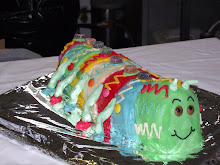The History of Saint Andrew
November 30th is St Andrew's Day in Scotland. The patronage of the saint whose name means 'manly' also covers fishmongers, gout, singers, sore throats, spinsters, maidens, old maids and women wishing to become mothers. But just who was Saint Andrew and how did he become the patron saint of Scotland?
From the Sea of Galilee to the North Sea
The story goes that Andrew – the Galilean fisherman who was singled out to be Christ's first disciple – preached the Gospel in the lands around the Black Sea and in Greece and was eventually crucified on an X-shaped cross in Patras. The geography of his mission explains the balalaika, for Andrew is indeed the patron saint of Russia and of Greece as well as of Scotland. The association with a land he never set foot on is, not surprisingly, based on a number of conflicting legends, the most colourful of which is the story of St Rule.
Three hundred years after Andrew's martyrdom the Roman Emperor Constantine, himself a Christian, ordered that the saint's bones should be moved from Patras to his new capital city of Constantinople. Before the order was carried out a monk called St Rule (or St Regulus) had a dream in which an angel told him to take what bones of Andrew's he could to 'the ends of the earth' for safe-keeping. St Rule duly took what he could – presumably in a swift and frantic raid on the tomb – and after an epic journey with the aforementioned assortment was shipwrecked on the east coast of Scotland. He must have deemed that he had indeed reached the 'ends of the earth'!
Over a millennium later St Rule's Tower still stands among the ruins of St Andrew's Cathedral, which – in its heyday – was a great centre of Medieval pilgrimage. But the whereabouts of the relics is unknown. They were probably destroyed in the Scottish Reformation. During his visit in 1969, Pope Paul VI gave further relics of St Andrew to Scotland with the words "St Peter gives you his brother" and these are now displayed in a reliquary in St Mary's Catholic Cathedral in Edinburgh. But what these comprise – a distal phalange maybe, and the odd canonical fibula – is not recorded.
A day to celebrate Scots
Whatever the truth of these ancient legends, the Saltire is without doubt based on the cross of Andrew's crucifixion and maybe the significance we should take today is that Andrew, although sometimes overshadowed by his brother Simon Peter, was the first disciple. And maybe in the light of Scotland's immense contribution to human knowledge, it's legitimate to suggest that the hagiographers got it wrong – and that the shards that St Rule brought to the coast of Fife were shards of the saint's cranium.
However, it was only after Robert the Bruce's famous victory at the Battle of Bannockburn in 1314 that St Andrew was officially named patron saint of Scotland and the Saltire became the national flag of Scotland in 1385: a manly saint for a rugged, victorious nation.
St Andrew – Folklore
Achaia, Amalfi, Burgundy, Constantinople, Greece and Lampertheim in Germany also lay claim to St Andrew. As do anglers, fish dealers and fishermen. And maybe it's on account of the saint's 'manliness' but there are a number of intriguing 'man-catching' superstitions related to his feast day.
Around midnight on November 29, it was traditional for girls to pray to St Andrew for a husband. They would make a wish and look for a sign that they had been heard.
A girl wishing to marry could:
throw a shoe at a door. If the toe of the shoe pointed in the direction of the exit, then she would marry and leave her parents' house within a year
peel a whole apple without breaking the peel and throw the peel over the shoulder. If the peel formed a letter of the alphabet, then this suggested the name of her future groom.
German folklore advises single women who wish to marry to ask for St Andrew's help. The night before the 30th, if they sleep naked, they will see their future husbands in their dreams. Young women should also note the location of barking dogs on St Andrew's Eve, as their future husbands will come from that direction.
Thursday, 9 April 2009
Subscribe to:
Post Comments (Atom)













1 comment:
Bit of local knowledge: Our congregation originally worshipped in Priestgate as Trinity Church - the listed building with the spire next to the museum is all that is left of the church - it now houses a day nursery. In 1972, the church moved to the current building in Netherton and changed its name to St. Andrew's. The United Reformed Church has similarities to the Church of Scotland and was formed by an original union of Presbyterians and Congregationalists.
Good info about our patron saint - might go in a sermon one day ...
David
Post a Comment